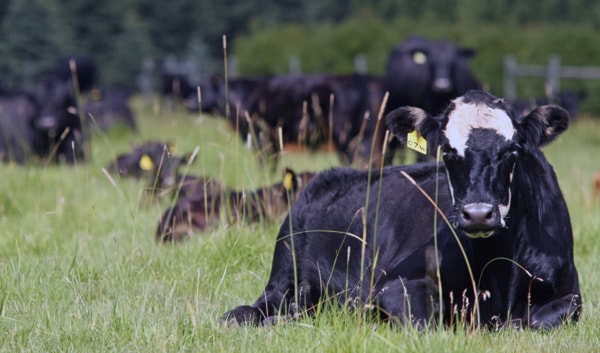Prior to the onset of the BSE crisis in 2003, Doug Sawyer had plans to expand his beef cow herd to 250 from 200 animals.
The ensuing years of foundering markets caused the Pine Lake farmer and many of his counterparts in the industry to question the wisdom of keeping any breeding stock. But now Sawyer, whose herd has dwindled to around 150 cows, is again eyeing his old target.
“If we can work it, our plan is to hit the 250 next year.”
Vice-chair of Alberta Beef Producers, Sawyer said higher prices have brought new optimism to the beef industry. Improved forage and hay supplies have helped, with the only major impediment a high loonie that continues to hamper exports.
“Even with that factored in, we’re still getting excellent prices.”
Statistics Canada reported this week that Alberta’s cattle count as of July 1 exceeded 5.5 million. That’s well below the pre-BSE number, but marks the first time in four years that the herd size has increased — albeit by only 0.2 per cent since July 1, 2010.
“We’re not going to see a big change in 2012, but at least the decline is over,” said Brian Perillat, a senior analyst with Canfax — a division of the Canadian Cattlemen’s Association that analyzes North American beef markets and trends.
However, the Stats Canada numbers cover all types of cattle, including slaughter animals and dairy stock.
“Cow numbers in Alberta actually are still down over last year, and have been declining for five or six years,” pointed out Perillat.
The inventory of cows is a key determinant of future herd sizes, but replacement heifers are up in 2011. And these should translate into more breeding cows down the road.
Sawyer, for example, sold cows to take advantage of the current high prices but also retained a number of bred heifers.
“So next year, my cow herd will actually increase.”
Alberta and Saskatchewan were the only provinces to experience growth in their cattle herds from July 2010 to July 2011. Nationally, the bovine count slipped 0.8 per cent, with beef cattle down 1.1 per cent.
The improved beef prices are due in large part to reduced supply, agreed Sawyer and Perillat.
“We lost 18 per cent of the herd from the peak of 2005,” said Perillat.
Even if Alberta’s herd now rebounds, the drought in the southern United States is likely to drag North American numbers still lower.
“I think we’re definitely going to see a significant decrease in the cow herd in the U.S.,” said Sawyer, stressing that while this may help Canadian producers, it’s still a tragic situation.
“I can’t say enough about how bad I feel for those guys.”
Since the North American cattle market is integrated, what happens south of the border has a big impact here, said Perillat. “They have more cattle in Texas than all of Canada.”
He added that the low U.S. dollar is making American beef more attractive to foreign buyers, which in turn creates opportunities for Canadian producers.
Concerns remain, however. Despite considerable efforts by the federal government to reopen foreign markets to Canadian beef, there are still restrictions, said Sawyer.
“We need those markets open to take a bunch of our product,” he said, explaining that a variety of cuts and renderings have greater value in other countries than they do in Canada.
High grain prices are also making it more costly for feedlot operators, with the impact to eventually be felt by producers down the chain.
And Alberta’s diminished herd size, while helpful in pushing up beef prices, brings risks.
“If it shrinks too much we’ve got a lot of infrastructure in the packing industry and feedlot industry,” said Perillat. “If you start losing too many numbers you’re going to start losing some of those players, which is not healthy really for the industry either.”
Sawyer agreed. “We’ve got to have those plants running at capacity to be financially viable, I think.”
If one were to close, it would have a “devastating” impact on Alberta’s beef industry, he said.
“That really concerns me.”
hrichards@www.reddeeradvocate.com
